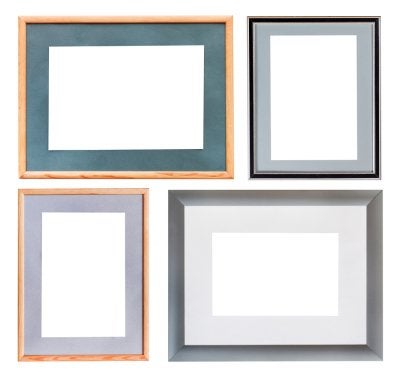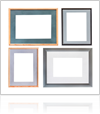Matting protects your art by creating a barrier between the art and glass. This keeps the art from sticking to the glass, and allows airflow around the piece of art. Mats also provide a border around the artwork that draws attention away from the frame and onto the work itself. Choosing the right color of matting can complement the art, enhancing its value. If you’re interested in ordering custom frames in the San Jose or Santa Clara area , visit a framing store and ask about their mat color options.
Pick Matting that Suits the Art
Don’t choose your matting color to match the color of your walls or complement your existing home décor. This
 will create too many competing elements in the room. Instead, choose a mat color that will enhance but not compete with the colors present in the artwork. This will also allow you to move the art into a different room, or a different house, without affecting your interior design elements.
will create too many competing elements in the room. Instead, choose a mat color that will enhance but not compete with the colors present in the artwork. This will also allow you to move the art into a different room, or a different house, without affecting your interior design elements.
Use Matting to Draw Viewers into the Art
Step back from the picture and view it from a distance. What is the first thing that pops out at you after a few seconds of focus? This is the focal point of the image to which you want to draw your viewers’ eyes. Find the most visually stimulating area in the picture, and choose a mat color that will not overshadow that area. Often simple colors are best, like shades of white, gray, or light blues and greens.
Choose Matting that Fits with the Style of Art
If you have a number of colorful pieces of art already hanging on your wall, you may want to frame all of them with the same color matting to create a unified theme. Colorful art often benefits from bright white matting, which allows the art’s color to be the focal point without competition. Photographs generally look best with off-white matting. Black and white artwork benefits from black, gray or silver matting. A framing store can also help you choose an appropriate mat color for your style of art.

